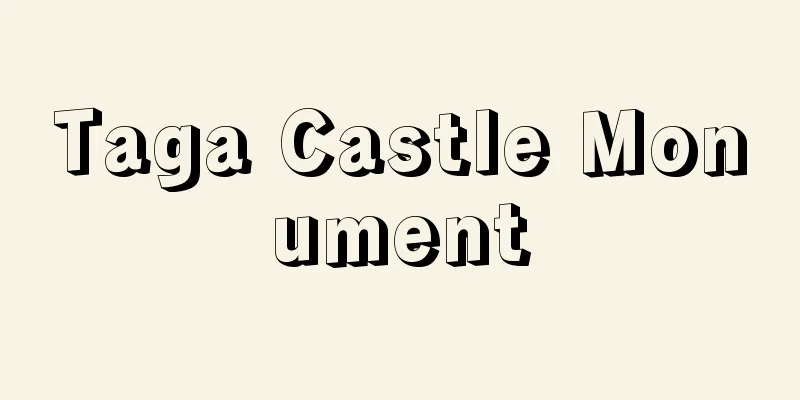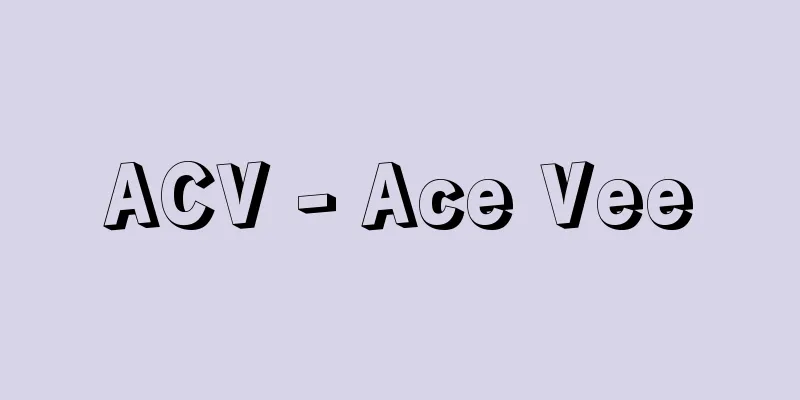Taga Castle Monument

|
This monument was erected in 762 (Tenpyo Hoji 6) to commemorate the repair of Taga Castle. It is one of Japan's three oldest monuments. It stands facing west at the point inside the south gate of the outer wall of the ruins of Taga Castle in Ichikawa, Tagajo City, Miyagi Prefecture. It is 247 cm high, 104 cm wide, and 73 cm thick, with about 50 cm of its bottom end buried in the ground. One side of the natural sandstone stone has been smoothed, and at the top is a large character for "west," with 140 characters inscribed in 11 lines below that in a rectangular frame. The inscription in the first half indicates the location of Taga Castle by recording the distance in miles from Heijo-kyo, the borders of Emishi, Hitachi, Shimotsuke, and Makkatsu provinces, and in the second half describes the history of Taga Castle, which was founded by Ono no Azumahito in 724 (Jinki 1) and repaired by Fujiwara no Emi no Asakari in 762, with the date of its erection, December 1, 6th year of Tenpyo Hoji, engraved at the end. This monument was discovered before 1658 (Manji 1), and has been mistakenly associated with the "Tsubo no Ishibumi" (a monument to a jar), a utamakura poem from the end of the Heian period, but this is incorrect. Since the Meiji and Taisho eras, the theory that the monument was fabricated in the Edo period has been widely believed to be a forgery based on the details of the distance, country name, and official rank, the shape of the monument, the way the characters are carved, and the style of calligraphy. However, excavations have revealed that the descriptions of the history of Taga Castle and the changes that have taken place there match, and a reexamination of the monument has revealed that the basis for this theory is invalid, and it is now considered to be an authentic monument erected in 762. Excavations have revealed that the monument stood in its current location from the beginning, but was knocked down once and then re-erected in the first half of the 17th century. This location was just east of the road leading from the south gate of the outer wall of Taga Castle to the south gate of the government office, and it stood facing west of this road, making it an ideal place to erect a monument. The monument is currently housed in a Hogyo-zukuri style roof built in 1875 (Meiji 8), but the original roof was erected not long after 1694 (Genroku 7). It was designated a National Important Cultural Property in June 1998. The history of Taga Castle is not recorded in detail in historical documents, so this monument is important in Taga Castle research as it clarifies that the first of the four periods of Taga Castle's transformation was in 724 and the second in 762. [Takao Imaizumi] "Tagajo Monument" by Tatsuo Abe and Minami Hirakawa, Revised Edition (1999, Yuzankaku Publishing) Nationally designated important cultural property Tagajo City, Miyagi Prefecture © Miyagi Prefecture Tourism Division "> Taga Castle Monument Source: Shogakukan Encyclopedia Nipponica About Encyclopedia Nipponica Information | Legend |
|
762年(天平宝字6)に多賀城の修造を記念して建てられた碑。日本三古碑の一つ。宮城県多賀城市市川の多賀城跡の外郭南門を入った地点に西面して立つ。高さ247センチメートル、幅104センチメートル、厚さ73センチメートルで、下端50センチメートルほどが土中に埋まる。砂岩の自然石の一面を平滑に加工して、頭部に「西」の大きな字、その下に長方形の枠の中に11行に140字を刻む。碑文の内容は、前半に平城京、蝦夷(えみし)国界、常陸国界、下野(しもつけ)国界、靺鞨(まっかつ)国界からのそれぞれの里程を記して多賀城の位置を示し、後半に724年(神亀1)に大野東人(おおののあづまひと)が創建し、762年に藤原恵美朝獦(えみのあさかり)が修造したという多賀城の沿革を記し、末尾に建碑した天平宝字6年12月1日の日付を刻む。この碑は1658年(万治1)以前に発見され、当初から平安時代末の歌枕「壺(つぼ)の碑(いしぶみ)」に当てられてきたが、これは誤りである。明治・大正年間以来、里程、国号、官位などの内容、碑形、文字の彫り方、書風などの諸点から、江戸時代に捏造されたという偽作説が有力視されてきたが、発掘調査によって明らかになった多賀城の変遷と沿革の記載の合致や、碑の再検討から偽作説の根拠が有効でないことが明らかになり、現在では762年建立の真物と考えられている。碑の発掘調査によって、碑が最初からほぼ現在地に立っていて、一度倒れて17世紀前半に再び立て直されたことが明らかになった。この地点は多賀城の外郭南門を入り、その南門から政庁南門に至る道路のすぐ東で、この道路に対して西面して立っていたのであり、記念碑を建てるのに好適な場所であった。現在碑は1875年(明治8)建造の宝形造(ほうぎょうづくり)の覆屋(おおいや)に収められているが、最初の覆屋は1694年(元禄7)から遠くない時期に設けられた。1998年(平成10)6月に国重要文化財に指定。史料に多賀城の沿革は詳しく記されず、多賀城の4時期変遷の第1期が724年、第2期が762年であることを明らかにする本碑は多賀城研究の上で重要である。 [今泉隆雄] 『安倍辰夫・平川南著『多賀城碑』増補版(1999・雄山閣出版)』 国指定重要文化財 宮城県多賀城市©宮城県観光課"> 多賀城碑 出典 小学館 日本大百科全書(ニッポニカ)日本大百科全書(ニッポニカ)について 情報 | 凡例 |
Recommend
Davy, Sir Humphry
Born: December 17, 1778, Penzance [died] May 29, 1...
Ministry of Finance - Ookurasho
A national administrative agency with jurisdictio...
Corchorus capsularis (English spelling)
...general term for the plant bast fiber, which i...
Corner Iconal - Kakuaikonal
...The eikonal is useful for analytically discuss...
Genabum
... As a key transportation point since ancient t...
X-ray CT - X-ray CT
… [Medical Use] X-ray photography is the most fam...
Escrivá, JM (English spelling) EscrivaJM
…It means “God’s work” in Latin. It was founded i...
Immune cell system - Immunocyte
A general term for cells involved in immune respon...
Tsunashima [Hot Springs] - Tsunashima
This hot spring is located in Tsunashima-cho, Koho...
Pensacola (English spelling)
A city in northwest Florida, United States. It is ...
Mariiskii Avtonomnyi Sovetskii Sotsialisticheskii Respublika
…Republic within the Russian Federation. Formerly...
Kanefuriyu
...It is also used in the Nembutsu dances of Shiz...
Mizuwarabi - Mizuwarabi
An annual fern of the family Pterygoceae. It has ...
Otto's Patent - Otto's Patent
...This Donation was expanded by Charlemagne afte...
Alimony
…It was not included in the old Civil Code provis...









